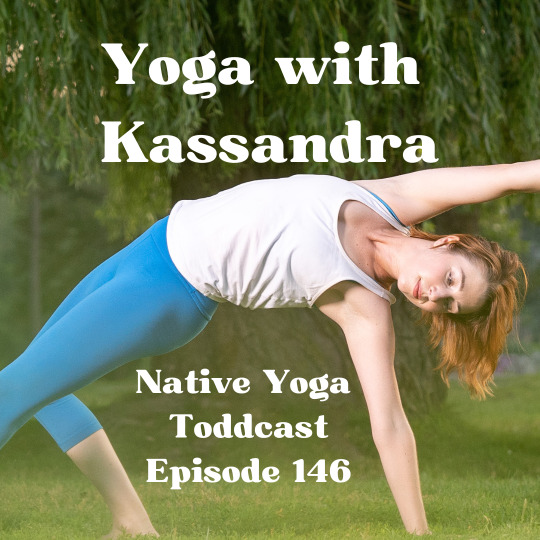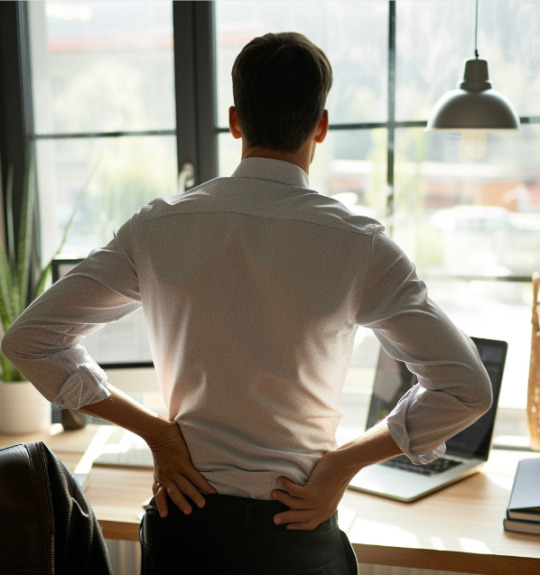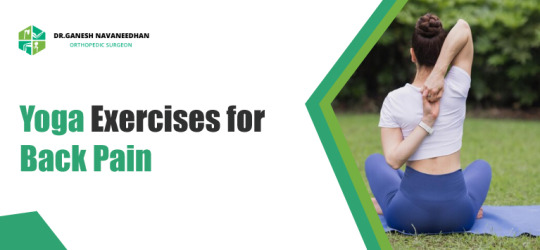#yoga for back pain
Text
Kassandra Reinhardt - Mastering the Art of Teaching Yoga Online: Tips and Strategies
Listen to Yoga with Kassandra Toddcast for Free Here
Kassandra Reinhardt is a renowned yoga instructor and the founder of Yoga with Kassandra. With over 2.3 million subscribers on YouTube, Kassandra has built a successful online yoga community and is known for her accessible and inclusive approach to yoga.Visit Kassandra on her website: https://www.yogawithkassandra.com/Follow her on…

View On WordPress
#Kassandra Reinhardt#meditation#mindfulness#online yoga#positive affirmations#stress management#teaching yoga#vinyasa yoga#yin yoga#yoga#yoga apps#yoga business#yoga classes#yoga community#yoga content creation#yoga entrepreneurship#yoga ethics#yoga for athletes#yoga for back pain#yoga for beginners#yoga for neck pain#yoga instructor#yoga marketing#yoga online#yoga philosophy#yoga practice#yoga sequencing#yoga studio#yoga teacher#yoga teacher training
2 notes
·
View notes
Text

Join 200/300 Hours Yoga TTC in Rishikesh. D'vine Yoga School gives you the best knowledge and skills which you need to become a successful Yoga Teacher
Our new batch starts on 1 August 2023
Hurry Up! Register Now
------------------------------------------
Accommodation: Private Room / Double-Shared Room
Location: D'VINE YOGA SCHOOL, Balyogi Premvarni Ashram, Jonk Road, Swarg Ashram, Rishikesh ( Calm and Spiritual City )
------------------------------------------
Level: Beginner to Intermediate
Duration: 22 Days/29 Days
Yoga Style: Multi-Style Yoga Teacher Training
Language: English
Certification: RYT 200 / 300 HOURS from Yoga Alliance
------------------------------------------
Contact Details
WhatsApp: +919997224320
Website: www.artdivine.org
Email: [email protected]
#yogarishikesh#kundalini yoga#yoga for back pain#200 hour yoga ttc in india#best yoga teacher training in rishikesh#rishikeshindia#yogateacher#yoga teacher training#retreats in rishikesh#mindfulness#meditation
3 notes
·
View notes
Text
Understanding the Different Types of Back Pain: A Comprehensive Guide
Back pain is a common ailment experienced by people of all ages and backgrounds. It can range from mild discomfort to debilitating agony, impacting one's quality of life and productivity. Understanding the various types of back pain is crucial for proper diagnosis, treatment, and prevention. In this comprehensive guide, we will delve into the distinctions between acute and chronic back pain, exploring their causes, symptoms, and management strategies.

Acute Back Pain
Acute back pain refers to sudden and short-term discomfort that typically lasts for less than three months. It can arise from various factors, including muscle strains, ligament sprains, or injuries such as lifting heavy objects incorrectly. Acute back pain often resolves on its own with rest, gentle stretching, and over-the-counter pain relievers. However, severe cases may require medical intervention.
Common Causes of Acute Back Pain:
Muscle Strain: Overexertion or sudden movements can strain the muscles in the back, leading to pain and stiffness.
Ligament Sprain: Stretching or tearing of the ligaments supporting the spine can result in acute back pain.
Herniated Disc: When the soft inner core of a spinal disc protrudes through its tough outer layer, it can compress nearby nerves, causing sharp pain.
Traumatic Injury: Accidents, falls, or sports-related injuries can damage the spine, resulting in acute pain.
Poor Posture: Prolonged sitting or standing in an improper position can strain the muscles and ligaments of the back, leading to discomfort.
Symptoms of Acute Back Pain:
Sudden onset of pain, typically localized to the lower back region.
Limited range of motion and stiffness.
Muscle spasms or cramping.
Pain that worsens with movement or activity.
Tingling or numbness in the legs (if nerve compression is present).
Management of Acute Back Pain:
Rest: Limit activities that exacerbate the pain and allow the back muscles to heal.
Ice and Heat Therapy: Applying ice packs or heating pads can help reduce inflammation and alleviate discomfort.
Pain Medication: Over-the-counter pain relievers such as ibuprofen or acetaminophen may provide temporary relief.
Gentle Exercise: Engaging in low-impact activities like walking or swimming can promote blood flow and aid in recovery.
Physical Therapy: A structured exercise program tailored to strengthen the back muscles and improve flexibility may be beneficial.
Manual Therapy: Techniques such as chiropractic adjustments or massage therapy can help alleviate pain and restore proper alignment.
Chronic Back Pain
Chronic back pain persists for more than three months and can significantly impact an individual's daily life. Unlike acute pain, which often stems from specific injuries or conditions, chronic back pain may develop gradually and be influenced by multiple factors, including lifestyle choices, genetics, and psychological well-being. Managing chronic back pain requires a comprehensive approach that addresses its underlying causes and focuses on improving overall function and quality of life.
Common Causes of Chronic Back Pain:
Degenerative Disc Disease: As people age, the spinal discs lose hydration and elasticity, leading to disc degeneration and chronic pain.
Spinal Stenosis: Narrowing of the spinal canal can compress the nerves, causing persistent back pain, numbness, and weakness.
Osteoarthritis: Wear and tear of the cartilage in the joints of the spine can result in chronic pain, stiffness, and reduced mobility.
Spondylolisthesis: This condition occurs when a vertebra slips out of alignment, causing nerve compression and chronic discomfort.
Fibromyalgia: A chronic pain disorder characterized by widespread musculoskeletal pain, fatigue, and tender points throughout the body.
Symptoms of Chronic Back Pain:
Persistent or recurrent pain that lasts for more than three months.
Dull, aching pain that may radiate to the buttocks, legs, or feet.
Stiffness and decreased flexibility in the spine.
Difficulty performing daily activities due to pain and discomfort.
Emotional distress, including depression, anxiety, or irritability.
youtube
Management of Chronic Back Pain:
Multidisciplinary Approach: Collaborating with a team of healthcare professionals, including physicians, physical therapists, and psychologists, can provide comprehensive care.
Medication Management: Prescription medications, such as muscle relaxants, antidepressants, or anti-seizure drugs, may be prescribed to alleviate chronic pain and improve mood.
Interventional Procedures: Injections of corticosteroids or local anesthetics into the affected area can help reduce inflammation and provide temporary lower back pain relief.
Exercise and Rehabilitation: A structured exercise program focusing on strengthening the core muscles, improving posture, and enhancing flexibility can help alleviate chronic back pain and prevent future episodes.
Mind-Body Therapies: Techniques such as mindfulness meditation, cognitive-behavioral therapy, or biofeedback can help individuals manage stress, cope with pain, and improve overall well-being.
Surgical Intervention: In severe cases where conservative treatments have failed to provide relief, surgical procedures such as spinal fusion, discectomy, or laminectomy may be considered to address structural abnormalities and alleviate chronic pain.
Conclusion
Understanding the different types of back pain is essential for effective management and prevention. While acute back pain often resolves with conservative treatments and self-care measures, chronic back pain requires a multidisciplinary approach that addresses its underlying causes and focuses on improving overall function and quality of life. By implementing a combination of medical interventions, lifestyle modifications, and holistic therapies, individuals can effectively manage back pain and lead healthier, more active lives.
0 notes
Text
Yoga for Back Pain | 2x Nutrition

Back pain is becoming a common issue these days. Here! many effective yoga poses: Cat-Cow Pose, Cobra Pose, Sphinx Pose and Child's Pose.
0 notes
Text
Yoga for Alleviating Back Pain

Can simple yoga exercises offer relief from persistent back pain? Back pain affects people of all ages and backgrounds, often stemming from stress, poor posture, or sedentary lifestyles. While various therapies exist, integrating yoga into your routine can provide a holistic approach to managing and preventing back pain.
This article delves into the benefits of yoga for back pain, explaining how yoga poses improve flexibility, strengthen core muscles, enhance posture, and reduce stress and anxiety, all of which contribute to alleviating back discomfort.
Understanding the Causes of Back Pain:
Before starting a yoga practice, it's essential to understand the common causes of back pain, which include lack of exercise, sedentary habits, and poor posture. Additionally, issues like muscular imbalances and tightness can exacerbate back discomfort.
Yoga's Therapeutic Approach to Back Pain:
Yoga addresses back pain through various mechanisms, such as:
1. Improving Flexibility: Yoga poses stretch and mobilize the muscles, ligaments, and joints of the back, increasing range of motion and reducing muscle spasms.
2. Strengthening Core Muscles: Targeting the muscles in the lower back and abdomen helps stabilize the spine, minimizing the risk of pain and injury.
3. Enhancing Posture: Yoga promotes proper body alignment, alleviating strain on the back's muscles and joints caused by poor posture.
4. Reducing Stress and Anxiety: Yoga incorporates relaxation techniques like deep breathing and meditation, which can indirectly alleviate back pain by reducing stress levels.
Recommended Yoga Poses for Back Pain:
Start with beginner-friendly poses like Child's Pose, Cow, and Downward-Facing Dog, gradually progressing to more challenging postures as you gain confidence and strength. Listen to your body, respect its limitations, and seek guidance from a qualified yoga instructor to ensure safe and effective practice.
Incorporating Mindfulness:
In addition to physical poses, mindfulness practices like deep breathing can enhance the therapeutic benefits of yoga for back pain. Mindful breathing promotes relaxation, soothing the nervous system and easing tension in the muscles.
Establishing a Routine:
Consistency is key to experiencing the full benefits of yoga for back pain. Consider incorporating these poses into your daily routine, gradually increasing the duration and intensity as your strength and flexibility improve.
In Conclusion:
Yoga offers an effective and natural approach to relieving and preventing back pain. By incorporating physical poses, mindful breathing, and a consistent yoga practice into your routine, you can support a healthy, pain-free back and improve overall well-being. Remember to consult with a healthcare professional before starting any new exercise regimen, especially if you have existing back issues. With dedication and mindfulness, yoga can become a valuable tool in your journey toward a healthier, happier back.
To know more yoga poses in detail, visit: https://www.drganeshnavaneedhan.com/blog/yoga-for-back-pain/
0 notes
Text
Yoga for Lower Back Pain
Finding Relief through Mindful Practice of yoga
Yoga for Lower Back Pain:Finding Relief through Mindful Practice of yoga Yoga for Lower Back Pain:

Understanding Lower Back Pain:
Before delving into the benefits of yoga for lower back pain, it’s essential to understand the causes and types of back pain. Lower back pain can result from various factors, including:
Muscle strain and overuse
Herniated discs
Sciatica
Poor posture
Sedentary lifestyle
Stress and tension
The Role of Yoga in Alleviating Back Pain:
Yoga offers a multifaceted approach to tackling lower back pain. It addresses both the physical and mental aspects of pain, making it a comprehensive solution. Here’s how yoga can help:
Improved Flexibility and Strength:
Yoga postures (asanas) can increase the flexibility and strength of the muscles in the lower back, promoting better support and alignment.
Enhanced Posture and Body Awareness:
Yoga emphasizes body awareness and proper alignment, which can help correct posture issues that contribute to back pain.
Stress Reduction:
Chronic stress and tension can exacerbate back pain. Yoga’s focus on deep breathing and relaxation techniques can help reduce stress and alleviate pain.
Spinal Health:
Many yoga poses involve gentle spinal stretches, which can relieve pressure on the lower back and improve overall spinal health.
Improved Circulation:
Yoga encourages blood flow and oxygenation to the affected areas, aiding in the healing process.
Key Yoga Poses for Lower Back Pain:
Child’s Pose (Balasana):
This resting pose stretches and relaxes the lower back muscles, offering relief from discomfort.
Cat-Cow Pose (Marjariasana-Bitilasana):
The gentle motion of arching and rounding the back in this sequence can help alleviate tension and improve flexibility.
Downward-Facing Dog (Adho Mukha Svanasana):
This pose stretches the spine, hamstrings, and calves while strengthening the lower back.
Cobra Pose (Bhujangasana):
Bhujangasana strengthens the lower back and can alleviate mild back pain when practiced regularly.
Pigeon Pose (Eka Pada Rajakapotasana):
Pigeon pose is effective in stretching the hip flexors, which can relieve pressure on the lower back.
Conclusion:
Yoga provides a natural and accessible way to address lower back pain. Its combination of physical postures, breathing exercises, and relaxation techniques can bring relief and promote overall well-being. Whether you’re a beginner or an experienced yogi, incorporating yoga into your daily routine can help you find lasting relief from lower back pain and enhance your quality of life. Remember to consult with a healthcare professional before starting any new exercise regimen, especially if you have a pre-existing condition or severe back pain. Yoga should be practiced mindfully and adapted to your individual needs.
#pradhyayoga#yogainspiration#yoga#yogaeveryday#yogapose#yogapractice#yogadaily#yogaeverywhere#yogachallenge#yoga for back pain
0 notes
Text
Easing Back Pain Fast and Effectively
Is your back sore? Let's explore ways for you to alleviate that pain right now : )
Lower back pain is a common ailment that can significantly impact daily life. It is the leading cause of absenteeism from work, affecting up to 80% of adults at some point in their lives. The back muscles and spine play a crucial role in supporting the body’s weight and facilitating movement. Therefore, they are always on the go, making them prone to inflammation and injury. While…

View On WordPress
#Back Pain Relief#Back Pain Treatment#Better Back#Easing Back Pain#Eating to Alleviate Back Pain#Exercises For Back Pain#Health and Fitness#In Shape News#Tricia Leanne Snell#Yoga for Back Pain
0 notes
Text
youtube
Advanced Yoga Teacher Training | Embark on a Journey of Self-Discovery and Transformation
The Advanced yoga teacher training program is designed for experienced yoga teachers who want to take their teaching skills to the next level. This program will help you explore advanced therapeutic techniques, alignment principles, and sequencing.
#akram yoga#akram yoga studio#becoming a yoga teacher#advanced yoga teacher training#yoga instructor course#yoga instructor#famous yoga teachers#certified yoga instructor#yoga teacher course#yoga asanas#yoga for weight loss#yoga international#morning yoga#yoga for back pain#yoga exercise#yoga fitness#yoga meditation#yoga teacher training near me#yoga instructor training#yoga teacher training course#advanced yoga training#Advanced Yoga Teacher Training#Youtube
0 notes
Text
Advanced Yoga Teacher Training | Embark on a Journey of Self-Discovery and Transformation
youtube
The Advanced yoga teacher training program is designed for experienced yoga teachers who want to take their teaching skills to the next level. This program will help you explore advanced therapeutic techniques, alignment principles, and sequencing.
#akram yoga#akram yoga studio#becoming a yoga teacher#advanced yoga teacher training#yoga instructor course#yoga instructor#famous yoga teachers#certified yoga instructor#yoga teacher course#yoga asanas#yoga for weight loss#yoga international#morning yoga#yoga for back pain#yoga exercise#yoga fitness#yoga meditation#yoga teacher training near me#yoga instructor training#yoga teacher training course#advanced yoga training#Advanced Yoga Teacher Training#Youtube
0 notes
Text
youtube
Advanced Yoga Teacher Training | Embark on a Journey of Self-Discovery and Transformation
✨The Advanced yoga teacher training program is designed for experienced yoga teachers who want to take their teaching skills to the next level. This program will help you explore advanced therapeutic techniques, alignment principles, and sequencing.
#akram yoga#akram yoga studio#becoming a yoga teacher#advanced yoga teacher training#yoga instructor course#yoga instructor#famous yoga teachers#certified yoga instructor#yoga teacher course#yoga asanas#yoga for weight loss#yoga international#morning yoga#yoga for back pain#yoga exercise#yoga fitness#yoga meditation#yoga teacher training near me#yoga instructor training#yoga teacher training course#advanced yoga training#Advanced Yoga Teacher Training#Youtube
0 notes
Text
Yoga for Back Pain Relief: Strengthening and Stretching Your Spine
In this blog, we will explore how practicing yoga at home in Mumbai, with the guidance of a skilled yoga trainer in Mumbai, can help strengthen and stretch your spine, leading to long-term back pain relief.
#Yoga by SuRavi#Yoga at Home in Mumbai#Yoga Trainer at Home in Mumbai#Yoga for Back Pain#Back Pain Yoga#Back Pain Relief Yoga#Yoga for spine correction#Mumbai#Marine Lines#Yoga at Home
0 notes
Text
Best Yoga Teacher Training School in Rishikesh
#kundalini yoga#yoga for back pain#200 hour yoga ttc in india#rishikeshindia#retreats in rishikesh#mindfulness#yogateacher#yoga teacher training#meditation#best yoga teacher training in rishikesh
2 notes
·
View notes
Text
youtube
The Advanced yoga teacher training program is designed for experienced yoga teachers who want to take their teaching skills to the next level. This program will help you explore advanced therapeutic techniques, alignment principles, and sequencing.
#akram yoga#akram yoga studio#becoming a yoga teacher#advanced yoga teacher training#yoga instructor course#yoga instructor#famous yoga teachers#certified yoga instructor#yoga teacher course#yoga asanas#yoga for weight loss#yoga international#morning yoga#yoga for back pain#yoga exercise#yoga fitness#yoga meditation#yoga teacher training near me#yoga instructor training#yoga teacher training course#advanced yoga training#Advanced Yoga Teacher Training#Youtube
0 notes
Text
youtube
Arm Yoga for Mobility | Yoga For The Soul | HT Lifestyle
In today’s time, our lifestyle promotes using our laptops, our mobile- all our electronic devices much more. This has led to many people facing pain in their wrists, elbows, and shoulders. Frozen shoulders have become more common than before. General Arm Mobility has gotten affected due to restricted movement of the arms. In this video, you will get to know a few asanas that will help you improve the mobility of your arm.
#yoga for beginners#yoga for flexibility#mobility#yoga for mobility#shoulder mobility#yoga for shoulders#yoga for spine#yoga for men#yoga for strength#mobility for beginners#mobility exercises#hip mobility#yoga for back pain#yoga for athletes#mobility routine#mobility workout#yoga for neck#yoga for shoulder mobility#yoga for mobility u0026 recovery#yoga for beginners men#shoulder mobility exercises#ht lifestyle#beginners yoga#morning yoga for beginners#Youtube
1 note
·
View note
Text
youtube
Hips & Low Back on Bolster
#back yoga#yoga for back pain#yoga canada#yoga house toronto#yoga trainer#yoga teacher#yoga for all#yoga for hips#yoga for beginners#yogapractice#yogabenefits#yogaforflexibility#yogaintoronto#Youtube
0 notes
Text
Yoga Therapy To Soothe Your Back Pain | KIMSHEALTH Trivandrum
There are many causes of back pain, it could be because of your inactive lifestyle, or an injury. Back Pain symptoms are not to be taken lightly, ignoring it may lead to even bigger problems in the future. Read more.
Visit - https://www.kimshealth.org/trivandrum/blog/yoga-therapy-soothe-your-back-pain/
0 notes